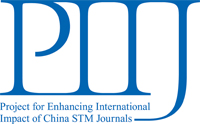Objective
Patients with diabetes commonly use complementary and alternative medicine (CAM). Little is known about types and factors related to CAM use in patients with diabetes in Thailand. This study aimed to examine types and factors that were associated with CAM use in Thai diabetic patients.
Methods
A cross-sectional study of diabetic patients being treated in four primary healthcare units and two secondary hospitals in the north of Thailand was conducted. A questionnaire was used to collect data. Frequency, percentage, and Chi-square test were used to describe or analyze data.
Results
The three most common types of CAM used by samples were Daode Xinxi (a modified version of Taichi), prayer and meditation. Women were more likely to use CAM than men (χ2=5.038, P=0.018). Patients aged between 40 and 69 years were more likely to use CAM than those aged younger than 40 or older than 69 years (χ2=11.041, P=0.026). Farmers were more likely to use CAM than those with other careers (χ2=19.248, P=0.007). Diabetes patients whose time since diagnosis was between 1 and 10 years were more likely to use CAM than those with a longer elapsed time since diagnosis (χ2 = 8.407, P = 0.038). Marital status, religion, education, health insurance type and conventional treatment approaches were not associated with CAM use in diabetic patients.
Conclusion
The most common type of CAM used by Thai patients with diabetes was mind and body practice. CAM use was significantly associated with gender, age, career and duration of diabetes. However, marital status, religion, education, health insurance types and conventional regimen for diabetics were not associated with CAM use.
 Table of Content
Table of Content














